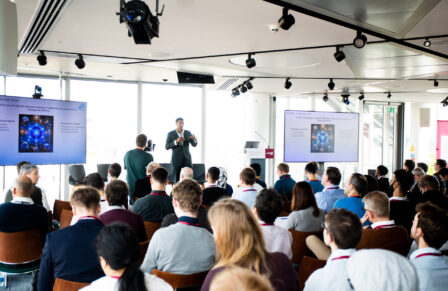The future calls for a convergence of the metaverse and Web3
Posted 19 Jul 2023
The future calls for a convergence of the metaverse and Web3
Real change will not come simply through greater adoption of immersive terminology and tools. Applications will need to converge with technologies that can disrupt existing models.
In the last 12-18 months, immersive experiences, visualisation, gaming, fashion, and virtual goods have evolved into a broader global ambition to build the metaverse. But an ambition without a plan for realising it will not bring about a deep change in how people access online services.
It’s clear that for a transformation to happen, there needs to be a convergence of Web3 and metaverse technologies such as blockchain and immersive human-computer interfaces.
Digital Catapult recently researched the state of UK industry in this area. Our latest report reveals how companies are exploring the opportunities and assessing the risks. Here we look at some of the insights from our research.
The transformation goes deeper than words and headsets
During 2021 and 2022, there was a noticeable shift in the language being used in technology innovation. Many of the companies Digital Catapult engaged with started describing their businesses and ideas in new terms.
Among the new terms is ‘metaverse’ itself – describing how a next-generation internet would work. The idea is the web offers services and means of communication accessed via immersive or spatial human-computer interaction. Examples include immersive community platforms, experiential retail, immersive education, virtual and ‘phygital’ goods, multiplayer location-based games, and online collaboration and content creation tools.
The emergence of the word implies a step-change in digital technologies and the services they enable. But changing terminology, on its own, is not an indicator of progress. It’s also not just a matter of increased use of augmented reality headsets and virtual reality glasses.
Real progress will come when the metaverse converges with Web3 – a constellation of cryptographic technologies, including blockchain, smart contracts, and tokens in all their forms. These all have the potential to change how ownership, transactions, online communities and businesses operate in the future.
What is Web3?
Web3 is the next evolutionary era of the internet, building on the paradigms of Web 1.0 and Web 2.0. A web of decentralised applications, it aims to bring greater security and privacy to online interactions and transactions primarily through the use of blockchain systems and smart contracts. We use the term ‘Web3’ to avoid potential confusion with the semantic web (Tim Berners-Lee’s description of machine-processable data on the web), sometimes described as Web 3.0.3. In the broader public eye, Web 3.0 has become associated with cryptocurrency and the associated negativity around crypto.
Culturally, cyber-physical infrastructure (CPI), the metaverse and Web3 may become closer to each other than technologists think. If we spend more and more of our professional time interacting with smart digital systems, those systems will be underpinned by technologies not far removed from those that power our leisure time.
Businesses need to strive for high interoperability
The principles that the metaverse and Web3 technologies operate on could become part of our everyday lives by the end of the 2020s. But for that to happen, these principles need to prove their value across a wide range of use cases.
Technologists and businesses building the metaverse and Web3 need to strive for high interoperability – meaning how computer systems or software exchange information and use it across different systems.
Without this, the improvements that Web3 promises will be incremental at best. In order to become the cornerstone for the next iteration of the internet, Web3 principles need to have a high degree of interoperability and standardisation. The same applies to the ways in which we can use it if we are to immerse ourselves and spend time in the metaverse, whether for work or leisure. Convergence of these technologies can then become something that captures people’s attention and creates value.
How the UK can become a leader in convergence
The UK has led in creating a vision for a technological future driven by CPI, harnessing its strengths (including those of the video game industry) to drive the innovation of the cyber-physical future.
The Digital Regulation Cooperation Forum (DRCF) was launched in 2021 to enhance cooperation, coordination and a coherent regulatory approach across the country’s digital regulators: the ICO, Ofcom, FCA and CMA.
Digital Catapult has worked closely with the DRCF to support their emerging technologies horizon, scanning efforts for the metaverse and Web3 respectively.
For the UK to be a leader in convergent technologies, further national and international collaboration is key. To improve the position of UK companies to innovate and create sustainable businesses, we need a healthier tech ecosystem that fosters better connection between supply and demand of the underpinning technologies, reducing risk for the end user.
We also need proven business models that encourage more innovators to get involved, not just current big tech and global luxury brands.
The UK’s new pro-competition regime for digital markets goes some way towards achieving this. It tracks the entrenched market power of centralised monopolies to make sure smaller businesses are not stifled by larger market powers in determining what the metaverse could and should be.
If you are interested in finding out more about Digital Catapult’s active role in boosting the development of cross-sector, national capability in cyber-physical systems, contact our team on [email protected]









